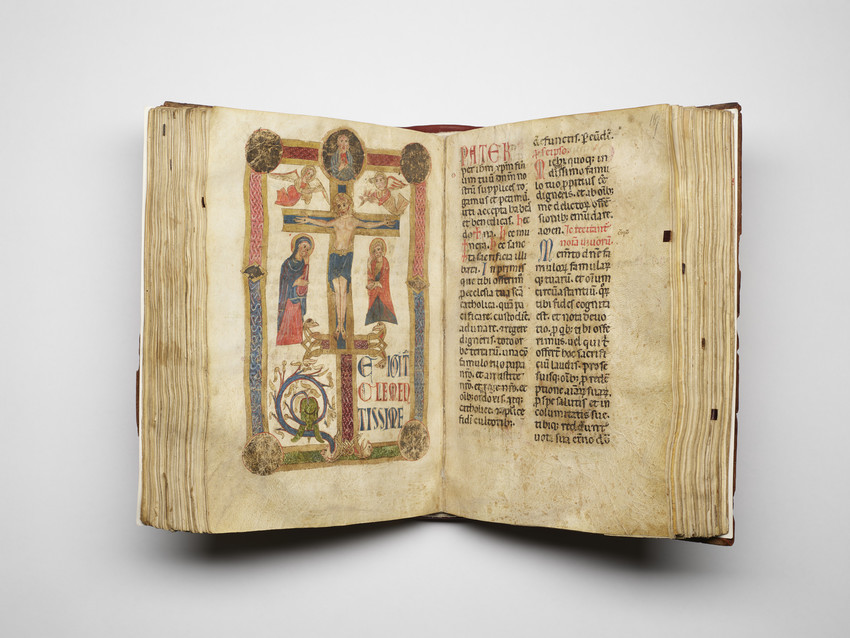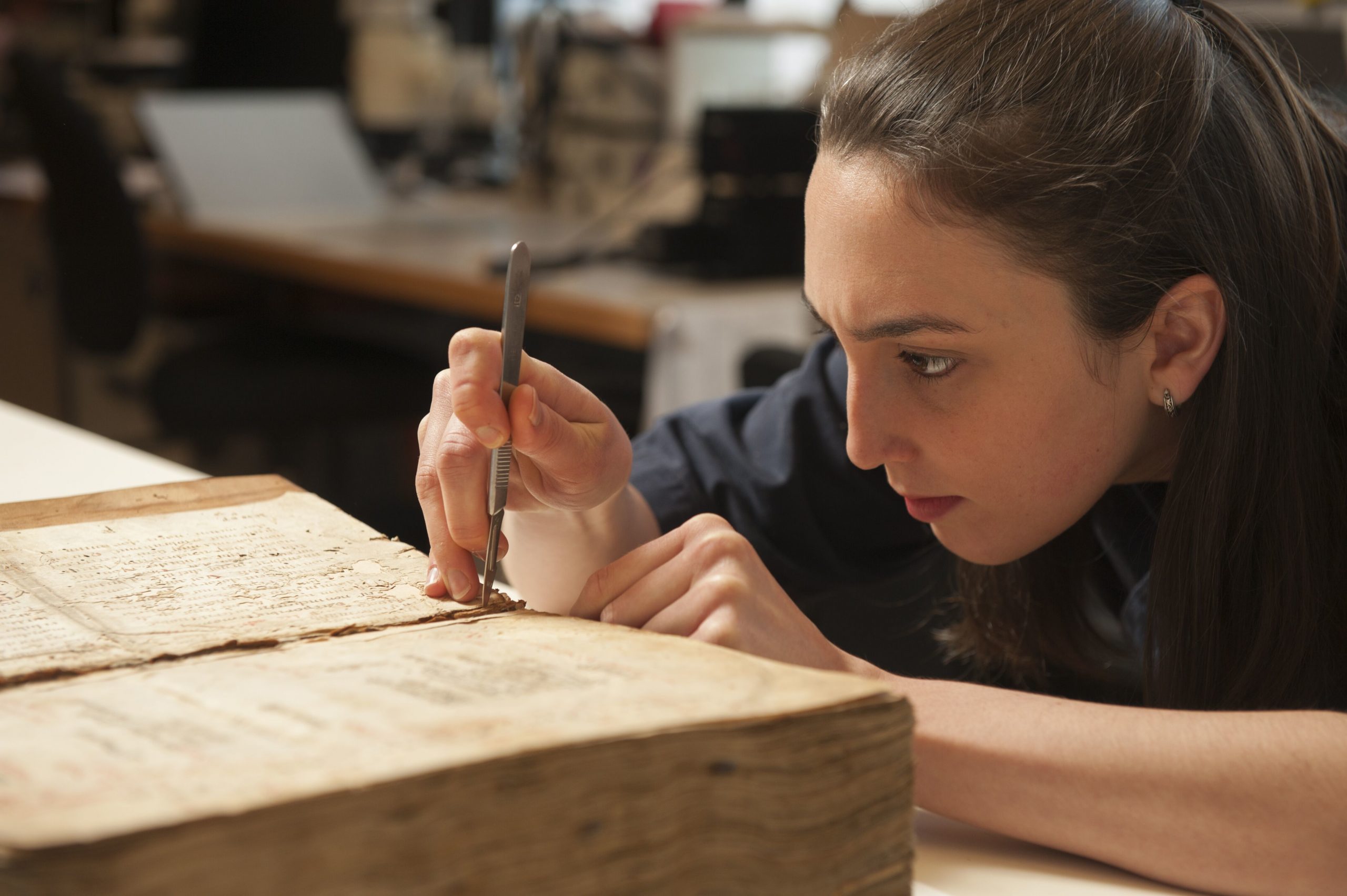Whether for the love of art or the love of a venerated saint, viewing The St. Francis Missal, opening at The Walters Art Museum on Feb. 1, is an essential pilgrimage.
At the center of this exhibition, housed on the third floor among other medieval treasures, is the Missal itself, said to have been the book consulted by St. Francis when he was looking for guidance from God on what his path might be. Legend has it that Francis and two followers opened the Missal, which sat on an alter in Assisi, three times at random. Each time, the text encouraged the renouncing of earthly possessions, thus laying the foundation for the Franciscan order.
As with most relics, the veracity of the claim can’t be positively proven, but the known facts about the manuscript do make its interaction with the saint plausible.

“This was a very heavily used manuscript,” says The Walters’ Curator of Rare Books and Manuscripts Lynley Herbert. “This is the book that would be on the altar and used regularly during the services. It was made for the church of San Nicolo, so we know that it was in the church that we want it to be in for the story of Francis. And we also have the name of a donor who was known to have lived in the 1180s and 1190s. So we can sort of use those things to triangulate the date and place of this manuscript. There really has never been another proposed book that could have been the book he opened. It’s actually more unlikely that I get to touch this book then that he would have.”
The Missal was acquired by Henry Walters in 1924. Since then, this relic of touch has been visited by scores of pilgrims and scholars. The decades of handling took their toll, and in 2017 a restoration to preserve it begun. Head of Book and Paper Conservation Abigail Quandt and Mellon Fellow Cathie Magee presided over the meticulous repair and stabilization project, which included taking the manuscript apart, hand-sewing the pages back together with linen thread, and binding new leather to heavily damaged 15th-century boards.
“The fact that it’s handled, and the pages are turned, we took that into consideration when making the decision about whether to actually take apart the whole book,” says Quandt. “But ultimately we decided that it would be best for the text to take it apart because then we could do the repair more successfully. It would be stronger repairs and it would last longer.”
Magee’s 21st-century stitches now run through the 15th-century binding holes and the 12th-century pages, very literally tying the relic’s presence at the Walters to its medieval past.

The new exhibition, which runs through May 31, is the first time in nearly 40 years that the Missal has been displayed publicly. It’s surrounded by other Franciscan pieces and relics pulled from the Walters’ archives, including items of private devotion and images of Saints Anthony and Clare—two important early Franciscan followers. They’re arranged around the Missal in an intimate space that evokes the side chapels of Europe’s old cathedrals—the traditional homes of many a Catholic relic.
In fact, the Missal is one of very few relics of St. Francis available to worshipers and historians in the United States. “I’m not aware of any other major relics connected to him in the country,” says Herbert. “This is one of the ones that people are most excited about.”
To give visitors the best experience with the Missal, on crowded days a limited number of people will be allowed in the small exhibition space at a time, with no time limit on viewing. The goal, says Herbert, is to allow those captivated by the relic to have their space and take the time they need, whether for interest or devotion.
“You don’t have to be religious to appreciate the fact that it’s this important historical moment,” says Herbert. “If somebody wants to come and stand here for an hour, having a moment with the book, that’s going to be probably one person in a hundred. It’s not going to cause a traffic jam. I’d rather that they get to have that experience, and I hope that people will feel comfortable coming in here and not having the crowds around. I hope it’s special for different reasons for different people.”
The St. Francis Missal opens Feb. 1 and will run through May 31. Herbert and Quandt will also present a lecture on the conservation of the manuscript, “Saving the Sacred: Medieval Tales and Modern Technology in the St. Francis Missal” on April 9.
